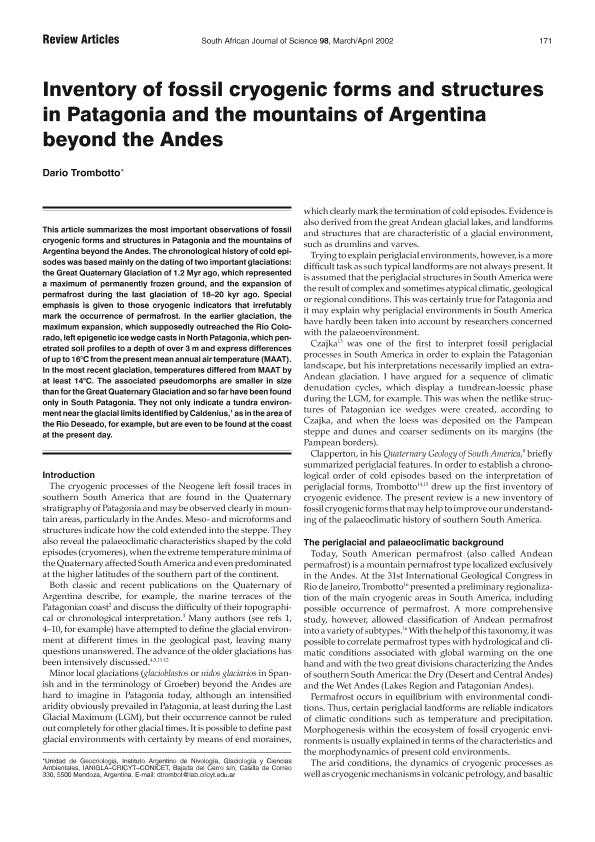Artículo
Inventory of fossil cryogenic forms and structures in Patagonia and the mountains of Argentina beyond the Andes
Fecha de publicación:
12/2002
Editorial:
Academy of Science for South Africa
Revista:
South African Journal of Science
ISSN:
0038-2353
e-ISSN:
1996-7489
Idioma:
Inglés
Tipo de recurso:
Artículo publicado
Clasificación temática:
Resumen
This article summarizes the most important observations of fossil cryogenic forms and structures in Patagonia and the mountains of Argentina beyond the Andes. The chronological history of cold episodes was based mainly on the dating of two important glaciations: the Great Quaternary Glaciation of 1.2 Myr ago, which represented a maximum of permanently frozen ground, and the expansion of permafrost during the last glaciation of 18–20 kyr ago. Special emphasis is given to those cryogenic indicators that irrefutably mark the occurrence of permafrost. In the earlier glaciation, the maximum expansion, which supposedly outreached the Río Colorado, left epigenetic ice wedge casts in North Patagonia, which penetrated soil profiles to a depth of over 3 m and express differences of up to 16°C from the present mean annual air temperature (MAAT). In the most recent glaciation, temperatures differed from MAAT by at least 14°C. The associated pseudomorphs are smaller in size than for the Great Quaternary Glaciation and so far have been found only in South Patagonia. They not only indicate a tundra environment near the glacial limits identified by Caldenius,1 as in the area of the Río Deseado, for example, but are even to be found at the coast at the present day.
Palabras clave:
Criogenic Forms
,
Patagonia
,
Argentina
Archivos asociados
Licencia
Identificadores
Colecciones
Articulos(IANIGLA)
Articulos de INST. ARG. DE NIVOLOGIA, GLACIOLOGIA Y CS. AMBIENT
Articulos de INST. ARG. DE NIVOLOGIA, GLACIOLOGIA Y CS. AMBIENT
Citación
Trombotto, Dario Tomas; Inventory of fossil cryogenic forms and structures in Patagonia and the mountains of Argentina beyond the Andes; Academy of Science for South Africa; South African Journal of Science; 98; 3-4; 12-2002; 171-180
Compartir




